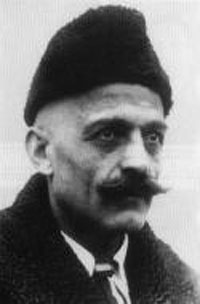- Petersburg in 1915.
- G. in Petersburg.
- A talk about groups.
- Reference to "esoteric" work.
- "Prison" and "Escape from prison."
- What is necessary for this escape?
- Who can help and how?
- Beginning of meetings in Petersburg.
- A question of reincarnation and future life.
- How can immortality be attained?
- Struggle between "yes" and "no."
- Crystalization on a right, and on a wrong foundation.
- Necessity of sacrifice.
- Talks with G. and observations.
- A sale of carpets and talks about carpets.
- What G. said about himself.
- Question about ancient knowledge and why it is hidden.
- G's reply.
- Knowledge is not hidden.
- The materiality of knowledge and man's refusal of the knowledge
given to him .
- A question on immortality.
- The "four bodies of man."
- Example of the retort filled with metalic powders.
- The way of the fakir, the way of the monk and the way of the yogi.
- The "fourth way."
- Do civilization and culture exist?
|
